It’s become so dangerous to express opinions, I’m getting off the net for awhile. Goodbye!
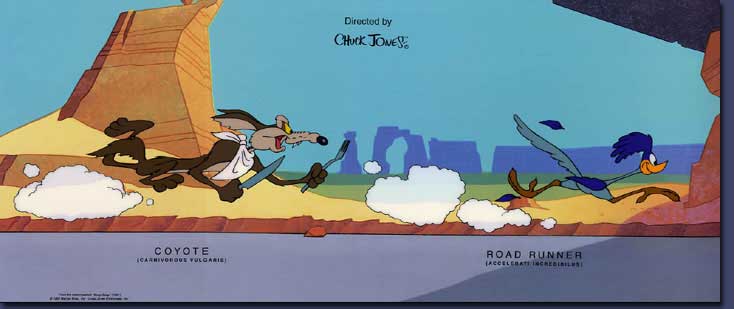
Wile E. Coyote and the Computationally Simulated Roadrunner
After yet another colossal failure, Wile E. Coyote came up with his best idea yet: To research the Roadrunner. RR being notoriously hard to catch, Wiley knew he couldn’t study it directly. So he ordered a computational simulation package from Acme Computer. With it, he built an automaton and named it Runnerbot. Wiley carefully calibrated Runnerbot so that its behavior exactly mimicked the real roadrunner. He recreated all of his greatest hits: The coyote cannon, the fake wall, the explosive bird seed. He re-ran each catastrophe again and again, so as to program Runnerbot to destroy him exactly as the real Roadrunner had done.
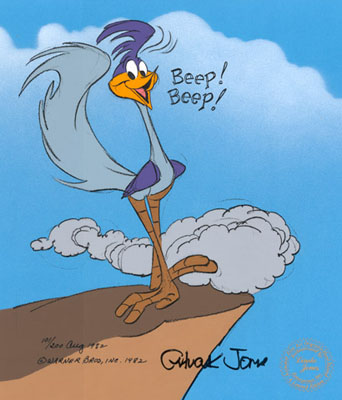
Four years and $5 million later, Runnerbot was finally finished. Wiley began to study it, searching for clues about the best way to capture the real roadrunner. Sure enough, a pattern of vulnerability began to emerge. It was this. At the end of every disaster, as Wiley sat smoldering on the ground, Roadrunner inevitably dashed up, went “beep-beep,” and tore off again. This was it! A regularity! An actionable insight from a computational social simulation!
Wiley immediately set to work. He built a bomb and ordered from Acme Baby Goods, Inc. a baby monitor. Wiley modified the baby monitor so that the words ‘beep-beep’ activated it. When activated, the monitor sent a signal to the fuse of the bomb, which then lit, leading shortly thereafter to a massive explosion. Excellent! Wiley strapped this bomb with its monitor to his stomach and hid it with a hair shirt. Finally, the crafty coyote built a rockfall trap above the road with the triggering mechanism just downhill from the rocks. He put a pile of bird seed in the road and crept behind the rocks to wait.
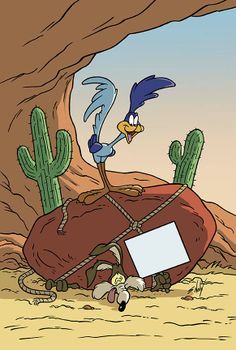 Soon enough the Roadrunner zoomed up and came to a screeching halt at the birdseed. As he happily pecked away, Wiley pretended to have trouble triggering the rockfall trap. He came grumbling around to the front of the rockpile and pulled the trigger. The rocks began to fall on him! Madly, he ran down to the road but – too slow! – the rocks crushed him anyway. His torn, crumpled body came to rest in the roadrunner’s shadow. A disaster. As expected.
Soon enough the Roadrunner zoomed up and came to a screeching halt at the birdseed. As he happily pecked away, Wiley pretended to have trouble triggering the rockfall trap. He came grumbling around to the front of the rockpile and pulled the trigger. The rocks began to fall on him! Madly, he ran down to the road but – too slow! – the rocks crushed him anyway. His torn, crumpled body came to rest in the roadrunner’s shadow. A disaster. As expected.
But the battered canine was overjoyed. “This is it!” he thought. “Roadrunner will say beep-beep and try to run off. But his song will trigger the bomb strapped to my stomach, and BOOM! Roadrunner roadkill!”
The Roadrunner, however, did no such thing. He looked at Wiley and noticed his bulging stomach. Responding creatively to the data, Roadrunner said, “You finally figured out how to eat. That means our story is done. I can leave you alone now.” And he sped cheerfully away, never to be seen in those parts again.
Wiley was astonished. How had he gone so wrong? How could his inferences from Runnerbot be so inaccurate? He looked to the skies and moaned, “But … but … the Roadrunner always says beep-beep!” And with that, a sizzling sound was to be heard from around the poor lad’s midriff. Seconds later: KABOOM!
The End

What does DNA mean?
After several decades of gradual formation, a deep understanding of evolution was first published in Darwin’s On the Origin of Species, in 1859. The ideas in the book then gradually seeped into cultural, social, and political consciousness. After forty years of this seeping, some began to write about competition for survival among human types. Twenty years later, serious support emerged for proposals to cull supposedly “weak” people from the human herd. Twenty years after that, notions of racial superiority led to mass genocide. The ideas of Darwin were then banished to the social and political wilderness. Yet the 1980s and 1990s saw new arguments and evidence for the concept of a “human nature,” features that have been hard-coded into us by the evolutionary process. More than a century after the book that brought evolution to light, with lots of mistakes on the way, we are still processing the idea in its social, cultural, and political dimensions.
The example of evolution tells us that discoveries about the fundamental nature of existence can take a very long time to make their way into the world of our daily lives. We are about forty years into processing the reality of the Big Bang, the fact that our universe actually had a beginning at a discrete moment. We’re only just beginning to work through virtual reality. There are many examples, discoveries that may take centuries to unpack.
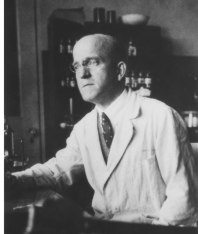 Where are we with DNA? Most of us credit Watson and Crick with the discovery of this curious acid in 1953, but they did not so much discover it as identify its structure, the double helix. Watson and Crick were also not the first to associate DNA with heredity. That honor goes to Oswald Avery, Colin Macleod, and Maclyn McCarty, who reported in 1944 that the hereditary information in bacteria was apparently transmitted by the cell’s DNA, not its proteins. The work of these scientists has led, over the ensuing decades, to a richer understanding of the genetic basis of the human person.
Where are we with DNA? Most of us credit Watson and Crick with the discovery of this curious acid in 1953, but they did not so much discover it as identify its structure, the double helix. Watson and Crick were also not the first to associate DNA with heredity. That honor goes to Oswald Avery, Colin Macleod, and Maclyn McCarty, who reported in 1944 that the hereditary information in bacteria was apparently transmitted by the cell’s DNA, not its proteins. The work of these scientists has led, over the ensuing decades, to a richer understanding of the genetic basis of the human person.
We now understand that DNA is code.
This is rather profound. It means that a person is not the matter of his body. The matter changes all the time. What keeps the person as the person he is, is not a constancy of matter, but the constancy of the code that builds the matter. That code is contained in his DNA.
DNA holds the code of a person, a single person, and no two people have the same code. This means that no two people are the same. Moreover, we have learned that the environment can affect which parts of the code express themselves. This means that even clones are unique. They may bear the same code, but the code will operate differently due to different circumstances.
What makes a person, then, is the interaction of his unique DNA with the world around him.
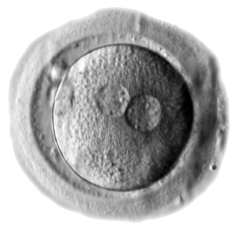 Our world is still trying to process what this means, culturally, socially, and politically. These scientific discoveries make it completely clear, for example, that a new person is created whenever a new DNA is created. A person is not primarily made of matter; a person is a code acting on matter. Once a new code starts acting on matter, a new person exists. Life begins at conception. Our world is still not ready to accept what this means.
Our world is still trying to process what this means, culturally, socially, and politically. These scientific discoveries make it completely clear, for example, that a new person is created whenever a new DNA is created. A person is not primarily made of matter; a person is a code acting on matter. Once a new code starts acting on matter, a new person exists. Life begins at conception. Our world is still not ready to accept what this means.
Code is immaterial. Infinite. Immortal. In the case of DNA, the code that makes us is a set of instructions rendered on a piece of matter, a harmless acid. The particular piece of matter can be destroyed; cells die. But the code is forever. It is notional, conceptual, intangible. It does not live here in this world; it is only rendered here. Code lives in the Platonic realm of the forms. If we are real at all, we are real in our combination of code and matter. A person is the rendering in the physical world of a code that exists outside the physical world. Our bodies are born and they die, but our code, our unique selves, existed before our bodies were here and will continue to exist long after. In fact our code does not participate in the time-world at all. The thing that makes us unique is immortal. Again, our world is still working on what this must mean.
A person is code acting on matter. This means a person is neither pure spirit nor pure matter. Many philosophies say that the material world is worthless, that all important things are part of our minds. Many others say that only the material world matters. Still others admit that the human person has spiritual and material aspects, but they are distinct and, according to some, at war with each other. Science now tells us that none of these views are correct. The human person combines the material and immaterial. But in our world, we still hear voices saying that our minds create who we are, or, conversely, that we are nothing but particles. Or, that we have a good, spiritual side and an evil, material side. We may take many decades to understand that we are a fusion of matter and spirit. We may take a long time to recognize that our physical bodies are fused with and partake in the eternal.
We partake of immortality, being dignified in spiritual and material personhood from the moment of conception. May this scientific knowledge continue to seep into our world.
Follow @Castronova_E
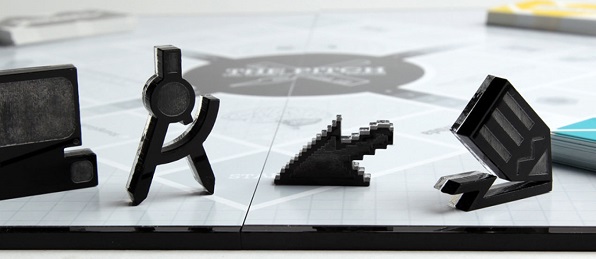
Publishing games is hard, but I have to try
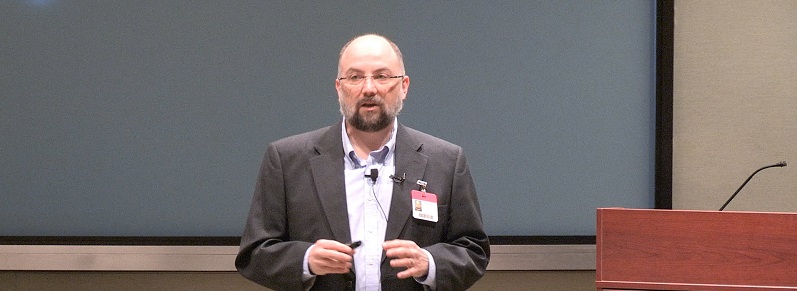 They say we have to keep on our feet as we age. Somehow over the past 15 years I have wormed my way into a job as Professor of Media specializing in game design. I’ve never published a game, not professionally anyway. Not for money. Not with full review and development, you know, REAL publishing. It makes me feel inadequate, like I am pulling a trick on the world. Who am I to be teaching in a game program when I haven’t done the thing I am teaching?
They say we have to keep on our feet as we age. Somehow over the past 15 years I have wormed my way into a job as Professor of Media specializing in game design. I’ve never published a game, not professionally anyway. Not for money. Not with full review and development, you know, REAL publishing. It makes me feel inadequate, like I am pulling a trick on the world. Who am I to be teaching in a game program when I haven’t done the thing I am teaching?
I have some backdoor justifications, but they seem awfully weak. I could argue that my qualifications come from my training in economics and political science, where I did so much social modeling… and making models is the same thing as making games, right? Well, yes and no. It’s the same thought process, certainly. You have in your mind a certain human social behavior that you want to reduce to its core forces. You write down some rules for how the system works and then derive what happens when the system is up and running. It’s basically the same thing as designing a game and a set of AIs to play it, then analyzing the outcomes.
Let me give an example. In a market, the rules of the game are that the consumer can’t get anything unless he pays for it. The setup is, the consumer has an income Y and goods are offered at prices P. The quantity purchased is X. Y is a scalar, P and X are vectors. This means the consumer purchases X must satisfy PX <= Y. That’s the game. Here’s the AI. The consumer’s goals are specified by a function U(X) with U’ > 0 and U” < 0 for all arguments. The consumer seeks to maximize U(X) subject to PX <= Y. A basic optimization problem… get your engineering book out and solve. The result is a demand function X(P, Y) that tells us – the designers – what the consumer / player will buy given the game we set up. If we designers change prices or income, the consumer / player will react accordingly.
This is so close to game design thinking… but not quite. Game design (as commonly understood) has the additional requirement that the process of choosing has to be enjoyable for the consumer / player. Now, economists would say that this common understanding, that games have to be enjoyable, is unnecessary for one of two reasons. The first would be that the only point of the analysis is to predict behavior. Game theory, they would say, is about analyzing games that are played, not making games that people want to play. Fair enough. If I use “game design” in the way my students use it, though, it means they expect me to know not only how to analyze games that are made but also how to make new games that engage people. Because I am not an economist pure and simple, but a media professor, I have to think about engagement. The second reason economists would balk at engagement is that there should be no effects outside the model. The idea is to construct the utility function so that the player’s goals are fully accounted for, including any desire they may have to actually play. But this gets us into a nasty nesting problem. In order to take account of engagement in a theoretically consistent way, I would have to embed the consumer demand game I described above inside of a bigger game of choosing games. What a mess. It’s not a mess for common sense, but it is a nasty mess for mathematical model construction. My students are not interested in the design of metagames that mathematically depict choices within the game of choosing games. They want to make games that people want to play. And the most helpful way to handle that engagement is to keep it separate from the task of designing the game system.
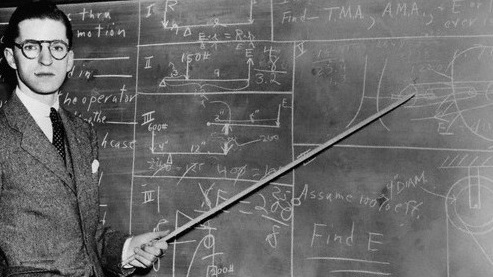
Thus my economics background is really only a half-justification for being a game design professor. I can’t tell my students that game theory is all they need, nor can I show them a good theory of game design that includes psychological satisfaction. Thus I have to become a game designer as it is commonly understood: A person who makes an interactive artifact that people like and play, that receives notice from publishers and critics and the public. This is the same standard as professors of English who teach creative writing. On the one hand they can give lectures about the craft of writing creatively, but they also have to write something and publish it in some way in order to be credible.
I need to publish games, but it is hard to jump into a completely new area of performance. I spent my early career writing (bad) research papers. Then I wrote books. Now I am trying to design and publish games. It’s hard. My coding skills are not so good, and my first love is board games, so I have been trying for several years to get something published there. Well, this area is swamped with would-be designers. Board games are not like books and papers. In books and papers, there are specific places where you can send things. Submissions are welcomed.They are often rejected, but at least you get a review and some comments. Then you send your work somewhere else. Well, there’s no such thing as that in board games. Publishers are overwhelmed with submissions and don’t have the time to wade through them all. If you’ve never published before, they have no reason to review your work. It is very hard to get a publisher to even look.
As a result, these last few years have been humiliating. It’s like being young again, in a bad way. I keep getting rejected over and over! I try to talk to publishers at conferences and I keep getting the cold shoulder. I stand there for 30 minutes waiting to get one word with someone, only to get a brusque “Nah, nobody would publish that game.” A couple of publishers took my prototypes and I never heard from them again. Not even a rejection letter. It reminds me of the early years, trying to get big-time professors to notice my (bad) little papers. And failing… ouch!
In these moments my heart goes out to everyone trying to launch a new career or a new direction. These challenges to the ego… truly a test of inner strength … after each rejection to get up and try again. Very hard. Keep going!
Yes, keep going, because there may be a light at the end of the tunnel. After years of quietly trying and failing, I may finally have something in the hopper with a game company. Not yet! But closer.
Even though I have not published a game, trying to do so has still been the right thing to do. The journey has taught me so much about how board games are made. Real-world insights, not stuff from game theory. And I guess this is how a professor can sleep at night. If you have given your whole life to your subject, until your heart is bleeding, then you have some credibility in the front of the classroom. You may not be the biggest success in your field, but you do know what you are talking about, because you have lived it.
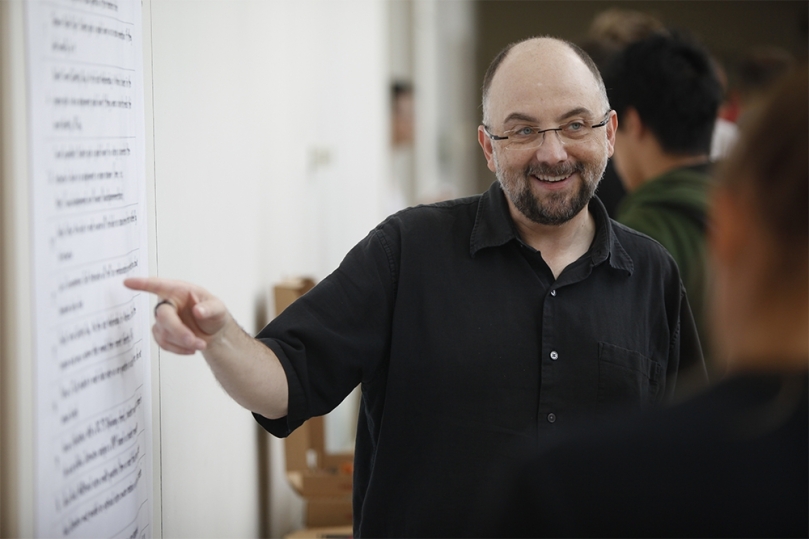
Hope for old men without hope

I like to have lunch with buddies and lately, these lunches have gotten pretty morose. My friends are a broad mix of ideological and philosophical types, but they’re all experienced – you know, old. And nobody’s excited or even optimistic.
I spent a lot of time studying public policy, back in the day, and I agree that there do not seem to be any reasonable policy solutions for the things going wrong. We are all standing around yelling at the government to do something, but there’s nothing it can do. Government can’t change culture. It can’t change anyone’s philosophy or their life commitments. It can’t make people behave better. And, you know, it can’t change the facts of the planet and technology. It can’t lower the oceans or stop the robots from taking over.
Is this a moment for reflection about what we expect from this world? Where does hope come from, anyway? The world has never been fully bad or good, just mixes of it. If we are hoping for a perfect world, we’re going to be disappointed. And if we thought the world should always get better, without ups and downs, well, that view of Progress was dispelled by the 20th century, wasn’t it?
In this dark hour, perhaps it is worth considering whether there’s hope that doesn’t come from the affairs of the world. I believe there is. May we all find it!